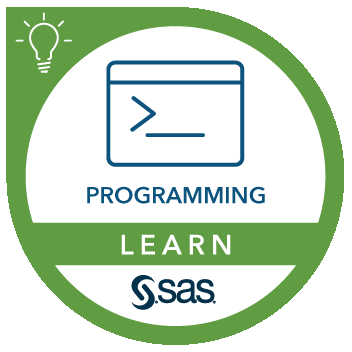Available in:
SAS® Macro Language 2: Advanced Techniques
MAC2 : MC2M8
This course covers macro quoting functions, macro storage, and macro techniques for advanced data access, table lookup operations, advanced parameter validation, and macro windows.
Learn How To
- Store and share macros with the autocall macro facility and stored compiled macros.
- Protect special characters with macro quoting functions.
- Automate data-driven macro calls.
- Access data properties with SAS I/O functions.
- Work with external directories and files in a macro program.
- Resolve macro variables during DATA step execution to perform table lookup operations.
- Create your own macro functions.
- Integrate parameter validation in macro programs.
- Build self-documenting macros.
- Use the macro language with SAS Viya.
Who Should Attend
Experienced SAS macro programmers who want to learn advanced techniques
Prerequisites
In order to be successful in this course, you should have completed the SAS Macro Language 1: Essentials course or have equivalent knowledge and experience. Specifically, you should be able to:
- Write macro programs that contain iterative processing and conditional processing.
- Create local and global macro variables.
- Create macro variables using the SYMPUTX routine.
- Use indirect macro variable references.
- Use the INTO clause in the SQL procedure's SELECT statement.
SAS Products Covered
Base SAS
Course Outline
Advanced Macro Concepts
- Storing macros with the autocall facility.
- Understanding macro program flow.
- Protecting constant text during macro compilation.
- Protecting resolved text during macro execution.
- Automating macro calls.
- Accessing data properties with SAS I/O functions.
- Working with directory contents in a macro program.
- Working with external files in a macro program.
- Working with Microsoft Excel files in a macro program.
- Building self-documenting macros.
- Using the stored compiled macro facility.
- How to use the macro language in SAS Viya.
Live Class Schedule
Duration: 14 hours
Step into our live classes and experience a dynamic learning environment where you can ask questions, share ideas, and connect with your instructor and classmates. With on-demand lab hours, you can explore the material at your own pace. Our globally acclaimed instructors will motivate you to think bigger, so you can take what you've learned and achieve your biggest goals.
09-12 FEB 2026
Live Web, US
9:30 AM-1:30 PM EST
Spanish
1,600 USD
17-20 FEB 2026
Live Web, US
1:00 PM-4:30 PM EST
English
1,600 USD
14-17 APR 2026
Live Web, US
10:30 AM-2:30 PM EDT
Spanish
1,600 USD
08-10,12 JUN 2026
Live Web, US
10:30 AM-2:30 PM EDT
Spanish
1,600 USD
Private Training
Get training tailored specifically for your team, led by expert SAS instructors. Choose from virtual sessions, or training at your location (or ours). Perfect for teams seeking a customized curriculum and plenty of interaction with a SAS specialist. We'll schedule it at a time that works for you.
Mentoring Services
Take your training to the next level with personalized mentoring. While private training offers structured coursework, mentoring provides hands-on, real-time support from a subject matter expert. As you work with your own data, you'll receive expert guidance to help you uncover insights, unlock the full potential of your data, and make faster progress. Perfect for those looking to apply what they’ve learned and see quicker results.
